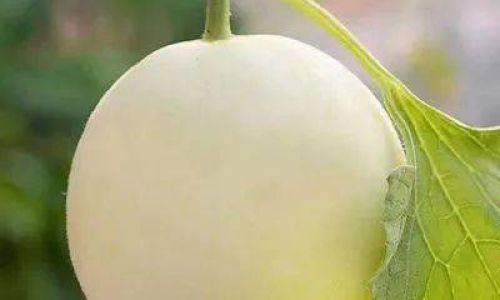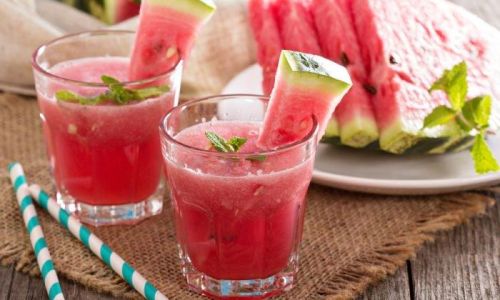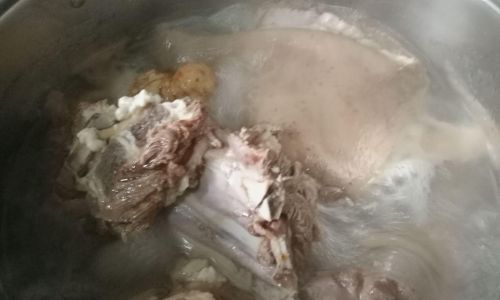Cantaloupe, with its sweet, juicy flesh and aromatic scent, is a summer favorite that deserves careful handling to preserve its quality. Whether you’ve harvested it from your garden, purchased it at a farmers’ market, or stocked up during a grocery sale, storing cantaloupe properly is essential to prevent spoilage, maintain its texture, and retain its vibrant flavor. This comprehensive guide explores the science behind cantaloupe storage, practical techniques for different stages of ripeness, and creative solutions to extend its shelf life. By understanding the fruit’s biology and implementing tailored strategies, you can enjoy cantaloupe at its peak for days or even weeks.

Understanding Cantaloupe: A Delicate Balance of Ripeness and Decay
Cantaloupe (Cucumis melo) belongs to the Cucurbitaceae family, which includes melons, cucumbers, and squashes. Like many fruits, cantaloupe undergoes a ripening process driven by ethylene gas, a natural plant hormone. Once harvested, the fruit continues to produce ethylene, which softens its flesh, intensifies its sweetness, and alters its texture. However, this process is a double-edged sword: while ripening enhances flavor, it also accelerates decay if not managed correctly.
The challenge lies in halting ripening at the ideal stage—when the fruit is sweet yet firm, with a velvety texture and no signs of overripeness. Factors like temperature, humidity, and exposure to oxygen and ethylene all influence how quickly a cantaloupe deteriorates. Mastering storage techniques requires balancing these elements to slow ripening without causing damage.
Storing Unripe Cantaloupe: Encouraging Natural Ripening
If your cantaloupe is underripe (firm, greenish rind, and lack of aroma), storing it at room temperature is critical. Avoid refrigeration, as cold temperatures below 50°F (10°C) can halt ripening and lead to a mealy, bland texture. Instead, follow these steps:
- Temperature Control: Place the unripe cantaloupe in a warm, well-ventilated area, ideally between 68–77°F (20–25°C). A kitchen countertop or pantry shelf works well. Avoid direct sunlight, which can cause uneven ripening or sunburn spots.
- Ethylene Management: To speed up ripening, place the cantaloupe in a paper bag with an apple or banana. These fruits emit ethylene, which accelerates the process. Check daily for softness and aroma.
- Humidity: Maintain moderate humidity (around 40–50%) to prevent the rind from drying out. Avoid storing near heat sources like ovens or radiators.
- Ripeness Tests: Gently press the blossom end (opposite the stem). A ripe cantaloupe will yield slightly to pressure and emit a sweet, musky scent. The rind should transition from green to golden-yellow, and the netting (raised ridges) should become more pronounced.
Once ripe, move the cantaloupe to the refrigerator to halt further ripening.
Storing Ripe Whole Cantaloupe: Maximizing Freshness
A perfectly ripe cantaloupe requires refrigeration to extend its shelf life. Follow these guidelines:
- Refrigerator Placement: Store whole cantaloupes in the crisper drawer, where humidity levels are higher (ideally 90–95%). If your crisper lacks humidity control, wrap the fruit loosely in plastic wrap or place it in a perforated plastic bag to retain moisture without trapping excess ethylene.
- Temperature: Maintain a consistent temperature of 36–41°F (2–5°C). Avoid storing near ethylene-sensitive produce like leafy greens, as cantaloupe’s ethylene emissions can accelerate wilting.
- Avoid Washing Before Storage: Moisture on the rind promotes bacterial growth and spoilage. Wash the cantaloupe just before slicing.
- Shelf Life: A whole ripe cantaloupe can last 3–5 days in the refrigerator. Check for soft spots, mold, or off-odors daily.
Storing Sliced or Cut Cantaloupe: Preventing Bacterial Growth
Cut cantaloupe is highly perishable due to its high water content and pH level (around 6.1–6.7), which creates a conducive environment for bacteria like Salmonella and Listeria. Proper storage is non-negotiable:
- Immediate Refrigeration: Place cut pieces in an airtight container or wrap tightly in plastic wrap. Do not leave at room temperature for more than 2 hours (1 hour if temperatures exceed 90°F/32°C).
- Anti-Microbial Measures: For added safety, dip cut surfaces in a solution of 1 teaspoon lemon juice per cup of water to inhibit bacterial growth. Pat dry before storing.
- Shelf Life: Consume within 3–4 days. Discard if the flesh becomes overly soft, discolored, or emits a fermented smell.
- Freezing Option: For long-term storage, freeze cantaloupe chunks on a baking sheet, then transfer to freezer-safe bags. Thaw in the refrigerator and use within 6 months for smoothies or sorbets. Note that texture will soften upon thawing.
Advanced Techniques: Vacuum Sealing and Ethylene Absorbers
For enthusiasts seeking cutting-edge methods, consider these tools:

- Vacuum Sealing: Remove air from bags containing sliced cantaloupe to slow oxidation and bacterial growth. Use this for pre-portioned smoothie ingredients or fruit salads.
- Ethylene Absorption Packs: Place these in the refrigerator drawer to neutralize ethylene gas,延缓 ripening. Replace packs every 3 months.
- Activated Charcoal: Place a small dish of activated charcoal near stored cantaloupe to absorb odors and ethylene.
Common Mistakes to Avoid
- Storing Unripe Cantaloupe in the Fridge: Cold temperatures permanently stop ripening, leaving you with a hard, tasteless fruit.
- Washing Before Storage: Excess moisture on the rind accelerates mold growth.
- Ignoring Ethylene Sensitivity: Storing cantaloupe near ethylene-producing fruits (e.g., apples, tomatoes) can lead to overripening.
- Using Airtight Containers for Whole Fruit: Trapped ethylene and moisture can cause the rind to soften prematurely.
Creative Solutions for Overripe Cantaloupe
Even with precautions, cantaloupe can sometimes become too soft. Repurpose it with these ideas:
- Smoothies and Sorbets: Blend overripe flesh with yogurt, honey, and ice for a refreshing treat. Freeze in popsicle molds for a kid-friendly snack.
- Jam and Chutney: Simmer diced cantaloupe with sugar, lemon juice, and spices (ginger, cinnamon) for a unique preserve.
- Infused Water: Add chunks to pitchers of water with mint or basil for a hydrating, flavorful drink.
- Grilled Cantaloupe: Slice thick wedges, brush with honey, and grill until caramelized. Serve with prosciutto and mozzarella.
The Science Behind Cantaloupe Spoilage
Cantaloupe decay is primarily caused by microbes like Rhizopus stolonifer (bread mold) and Penicillium species, which thrive in moist environments. Enzymatic breakdown also contributes to softening. Refrigeration slows microbial growth and enzyme activity, while ethylene control delays ripening.
Sustainable Storage: Reducing Food Waste
Cantaloupe’s thick rind makes it a candidate for composting if spoiled. Alternatively, use the rind to make pickles or candied treats. For gardeners, bury spoiled fruit in soil to enrich it with nutrients.
Conclusion: Enjoying Cantaloupe at Its Best
Storing cantaloupe is an art that balances science and practicality. By understanding the fruit’s ripening cues, controlling ethylene exposure, and leveraging refrigeration wisely, you can savor its sweetness for days. Whether you’re a home gardener, a zero-waste advocate, or a culinary explorer, these techniques ensure that every cantaloupe meets its full potential—from vine to table.
Final Tip: Label stored cantaloupe with the date of ripening or slicing to track freshness. A small investment in organization can prevent waste and elevate your summer meals.
By adhering to these methods, you’ll transform cantaloupe storage from a chore into a rewarding ritual, preserving the essence of summer in every bite.






0 comments